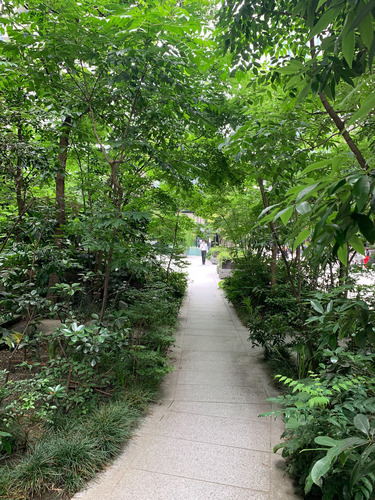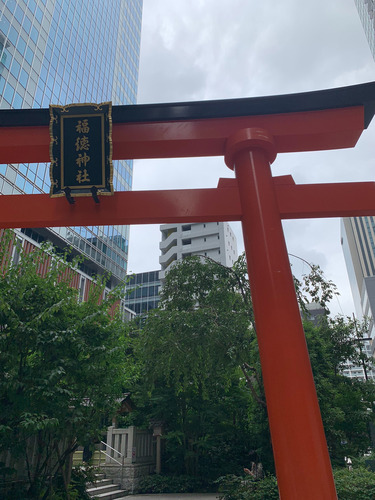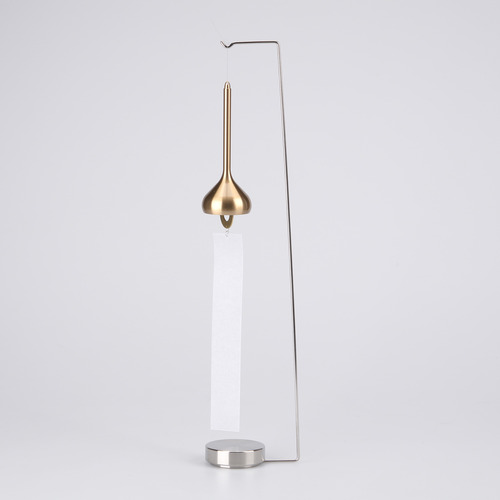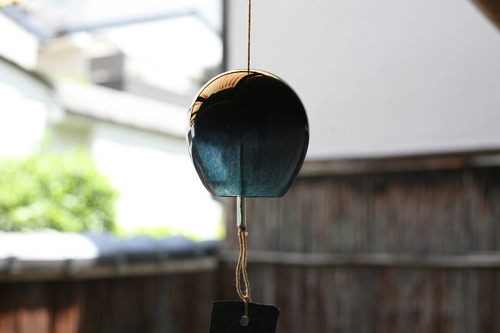





[Listening to the Wind]
The sound of wind bells eases the summer heat, but in the past they also had the meaning of repelling evil spirits. It is said that wind bells were first introduced to Japan when "futaku," or wind bells, were introduced from China with the arrival of Buddhism. Wind bells made of bronze at that time had a dull and heavy tone, and were hung at the four corners of temples as a protection against misfortune, as the area where the sound could be heard was a sacred area. Since it was believed that colds and other illnesses were carried by the wind, knowing the direction of the wind may have had a connotation of protection against illness.
From the Heian to Kamakura periods, aristocrats sometimes hung wind bells from the eaves of their houses to ward off evil and symbolize authority. Eventually, wind bells gradually became smaller and smaller, and some say that Honen, the founder of the Jodo sect of Buddhism, named them "fǔrei," which is how the word "furin (wind bell)" came to be used.
In the middle of the Edo period (1603-1867), the manufacturing process for colorless, transparent glass was introduced to Japan via the Netherlands, and around the end of the Edo period, biidoro-made wind bells began to be produced. Furin vendors appeared on the streets of Edo, selling wind bells not by their sales calls but by their tones, with the wind bells hanging from a balance. Their light tones must have brought coolness to the eight hundred and eight towns in summer. In Japan, where it was customary to listen to the sound of bell insects in the first place, it seems to have been a natural progression for wind bells to take root as a way to feel cool by their sound. In fact, data show that when Japanese people listen to the sound of wind bells, their body temperature decreases.
Wind bells are also believed to have a relaxing effect. You may have heard the term "1/f fluctuation," which refers to the state in which regularity and irregularity are in harmony. Irregular sounds like the sound of a murmuring river or the sound of waves are it. And wind bells. When humans listen to these sounds, alpha waves are induced in the brain, which is said to be relaxing. In addition to sound, some fans also produce this "fluctuating" wind.
Furin is one word, but nowadays there are many kinds of furins made of various materials such as glass, Nambu iron, brass, and so on. The tone of the sound varies depending on the material. With the passage of time, housing conditions have changed, and people may be more concerned about the sound of wind bells. On the other hand, when it gets hot and you ring a furin, you will be deeply impressed by its nice tone.
Most wind bells are hung outside, but if you hang a wind bell on a wind bell stand, you can place it inside your front door and enjoy its sound while being considerate to your neighbors. It is also a great way to enjoy the sound not only in summer but also throughout the year as an objet d'art for your entrance. It is hoped that the sound of the wind bell will bring in happiness and be a soothing tone to say "Welcome back safely" to family members and "Welcome to the house" to visitors.
In the Nihonbashi area, which is not far from our Ginza Showroom, "Forest Wind Bell Paths" will appear at two other locations centering on the Nihonbashi Muromachi area during the summer under the theme of "Enjoy the coolness of Edo through the five senses." How about taking a cool stroll through the city while listening to the sound of wind bells?
Nousaku's Wind Bell and Wind Bell Stand
https://www.shokunin.com/en/nousaku/furin.html
Rikucho Ogasawara's Nambu Wind Bell
https://www.shokunin.com/en/rikucho/furin.html
Touch Classic's Wind Bell
https://www.shokunin.com/en/touchclassic/furin.html
Ginza Showroom
https://www.shokunin.com/en/showroom/ginza.html
Reference
https://ja.wikipedia.org/wiki/%E9%A2%A8%E9%88%B4
https://www.jataff.or.jp/konchu/listen/listen.html#gsc.tab=0
https://www.nihonbashi-tokyo.jp/ecoedo/